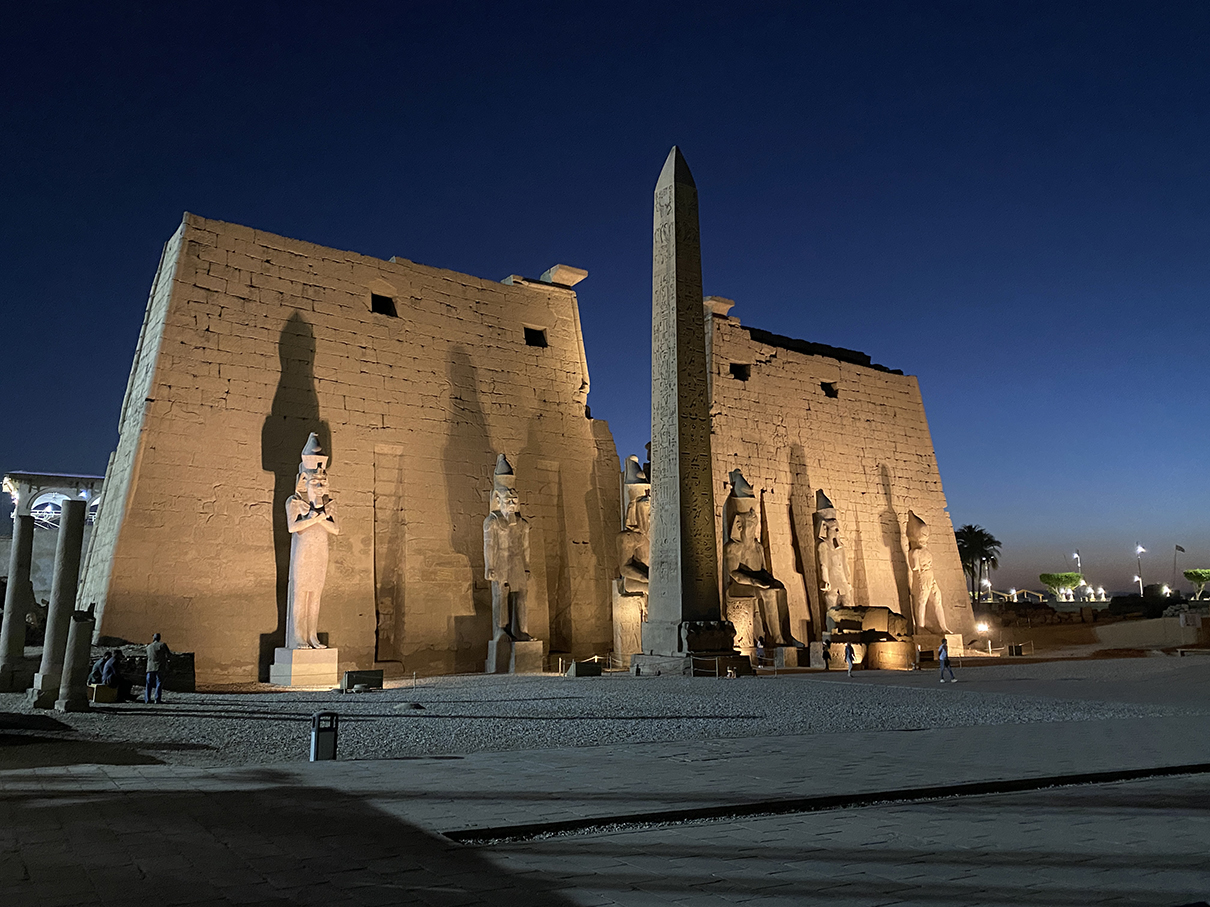Difference between revisions of "Template:POTD protected"
Jump to navigation
Jump to search
Occultwiki (talk | contribs) |
Occultwiki (talk | contribs) |
||
| Line 3: | Line 3: | ||
|style="padding:0 6px 0 0"| | |style="padding:0 6px 0 0"| | ||
[[Luxor]] is among the oldest inhabited cities in the world. | '''[[Luxor]]''' is among the oldest inhabited cities in the world. | ||
The modern city includes the site of the Ancient Egyptian city of '''Waset''', also known as '''Nut''' (Coptic: ⲛⲏ) and to the Greeks as '''Thebes''' or '''Diospolis'''. Luxor has frequently been characterized as the world's greatest open-air museum, as the ruins of the temple complexes at Karnak and Luxor stand within the modern city. Immediately opposite, across the River Nile, lie the monuments, temples and tombs of the west bank Necropolis, which includes the [[Valley of the Kings]] and Valley of the Queens. | The modern city includes the site of the Ancient Egyptian city of '''Waset''', also known as '''Nut''' (Coptic: ⲛⲏ) and to the Greeks as '''Thebes''' or '''Diospolis'''. Luxor has frequently been characterized as the world's greatest open-air museum, as the ruins of the temple complexes at Karnak and Luxor stand within the modern city. Immediately opposite, across the River Nile, lie the monuments, temples and tombs of the west bank Necropolis, which includes the [[Valley of the Kings]] and Valley of the Queens. | ||
Revision as of 01:38, 6 October 2022

|
Luxor is among the oldest inhabited cities in the world. The modern city includes the site of the Ancient Egyptian city of Waset, also known as Nut (Coptic: ⲛⲏ) and to the Greeks as Thebes or Diospolis. Luxor has frequently been characterized as the world's greatest open-air museum, as the ruins of the temple complexes at Karnak and Luxor stand within the modern city. Immediately opposite, across the River Nile, lie the monuments, temples and tombs of the west bank Necropolis, which includes the Valley of the Kings and Valley of the Queens. Photographer: Travis McHenry |